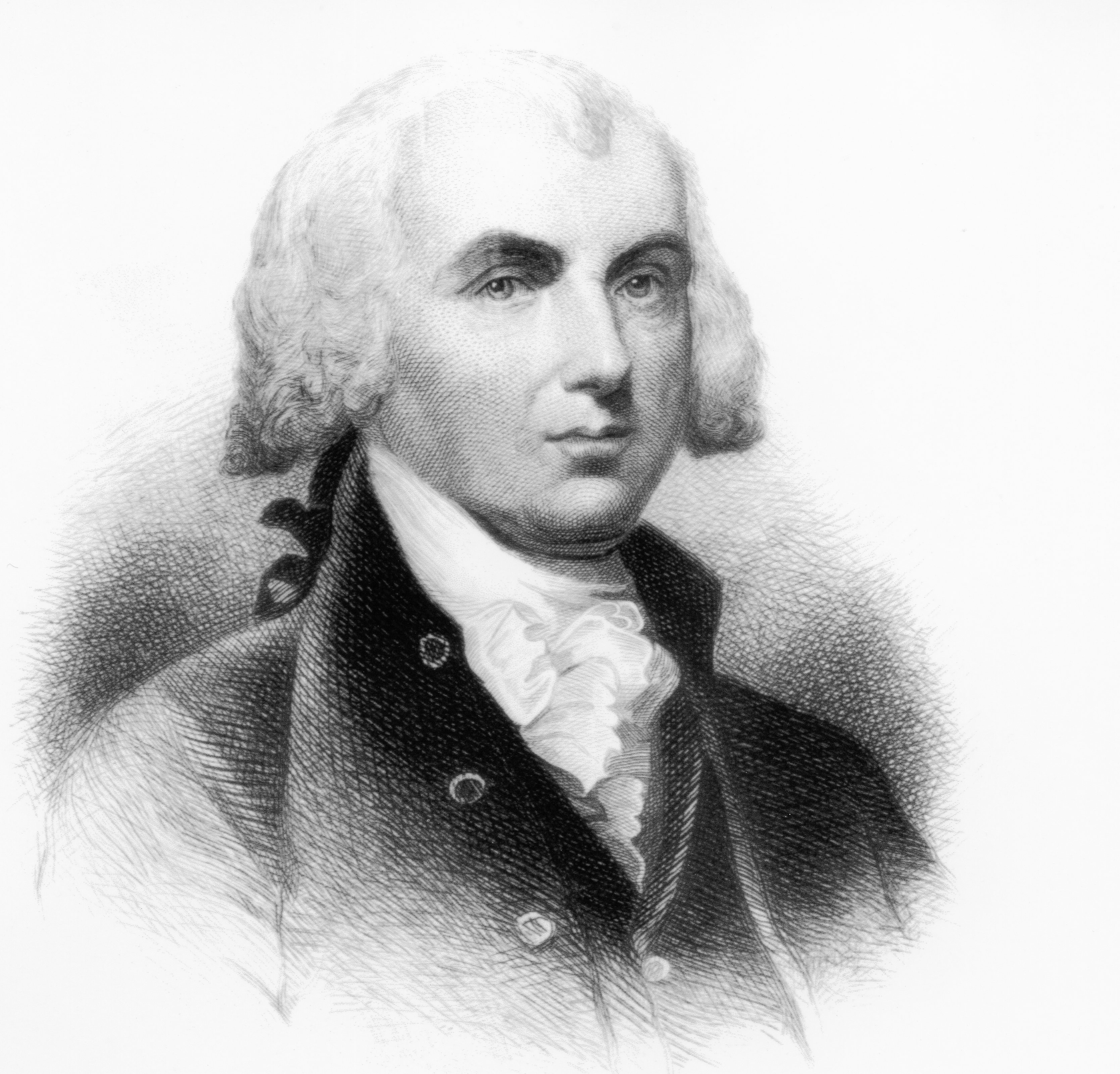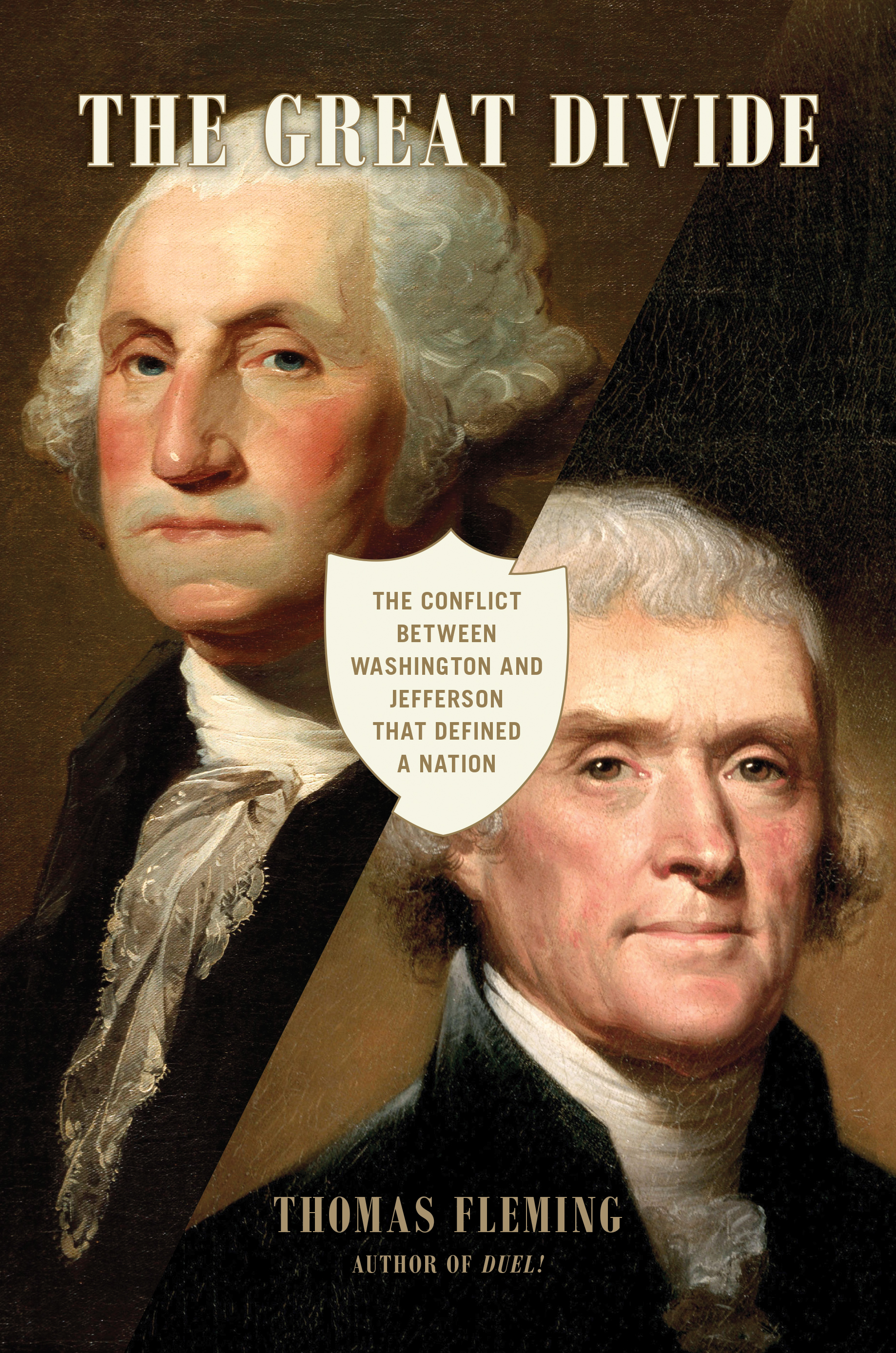By Thomas Fleming (Guest Contributor)
The most important years of short, slight James Madison’s life began in 1785 when he joined a worried ex-General George Washington on his sunny piazza at Mount Vernon, overlooking the broad Potomac River. Ex-Continental Congressman Madison was there to discuss how to create a stronger federal government. Soon there was a Constitutional Convention, then a fierce contest to ratify the results, followed by the election of Washington to a powerful new office, the presidency.
 In all these dramas, these two very different men were amazingly effective partners. A recent insightful biographer has described Washington as a realistic visionary. Madison was the brilliant structural engineer who turned his vision into a working government. As two men grew closer, Washington began signing his letters to Madison with a rare (for him) word: “Affectionately.”
In all these dramas, these two very different men were amazingly effective partners. A recent insightful biographer has described Washington as a realistic visionary. Madison was the brilliant structural engineer who turned his vision into a working government. As two men grew closer, Washington began signing his letters to Madison with a rare (for him) word: “Affectionately.”
But another Virginian was soon competing for the ex-Congressman’s affections. When Thomas Jefferson had been governor of wartime Virginia (1779-81), Madison had been his favorite advisor. During the creative years of Madison’s partnership with Washington, Jefferson had been in France, serving as America’s ambassador. When he became Washington’s Secretary of State in 1790, it soon became apparent that the late arrival had a low opinion of the Constitution and the presidency. He saw no need for such a strong federal government. He was soon disapproving and dismissing almost everything the president was doing — and he turned Madison, by this time a prominent Congressman, into an almost shameless disciple.
Soon Madison was telling Congress that Secretary of the Treasury Alexander Hamilton’s brainchild, the Bank of the United States was dangerously similar to the Bank of England – proof that it was part of a Hamilton plot to create an American king. The Congressman joined Jefferson in lavishing praise on the French Revolution, even when radicals began massacring thousands of innocent people.
Madison helped found a newspaper that relentlessly attacked Hamilton — and President Washington. Madison wrote for the paper under various pseudonyms, denouncing the commercial republic Hamilton was creating, with Washington’s enthusiastic approval. Instead the Congressman was a fervent apostle of Jefferson’s vision of America as a nation of virtuous farmers.
Not without regret – Martha Washington was very fond of Madison’s wife, Dolley – the President stopped speaking to his former partner. The hostile feeling was reciprocated. When Washington died unexpectedly in 1799, Madison joined Jefferson in declining to attend his memorial service in the nation’s capital, Philadelphia.
With crucial help from Madison, Jefferson became president in 1801 and appointed his favorite supporter secretary of state. Madison became an even more devoted disciple. He made no objection when Jefferson did his best to make Washington’s presidency insignificant. He helped Jefferson create the illusion that Congress was all powerful and the president an agreeable supernumerary who merely made helpful suggestions. Madison’s reward was the 1808 nomination for president in his own right.
Madison soon discovered some of the problems a Jeffersonian style presidency could create if you were not a tall Virginian who had written the Declaration of Independence. Congress’s attitude toward “Little Jemmy,” as they called him was a barely concealed contempt. The congressman thought they were in charge of the country and acted that way. When the Bank of the United States tried to renew its charter in 1810, Congress repudiated it. Madison did not say a word in its defense.
With 99 percent of the British army fighting for survival against Napoleon in Europe, Congress thought Canada would be an easy conquest. In Monticello, ex-president Jefferson assured everyone that it would be “just a matter of marching.” Thus the War of 1812 began. President Madison’s army consisted of a few regulars and thousands of untrained militia. Jefferson assured everyone there was no need for regulars if these amateur patriots were properly led.
The war became a series of disasters. The handful of British regulars in Canada repeatedly routed Madison’s Jeffersonian army. Without the Bank of the United States, Madison discovered his government did not have enough cash to pay the salaries of their clerks. The climax was an invasion of Washington DC by some 4,500 redcoats, who torched every major building, including the White House. The air grew thick with calls for Little Jemmy’s impeachment. From Europe came news of Napoleon’s collapse, leaving the United States alone against Britain’s gigantic navy and veteran army. At Monticello ex-President Jefferson fell strangely silent.
Fortunately, a few Americans kept their heads. One was a general named Andrew Jackson. The other was a commodore named Thomas Macdonagh who commanded a fleet on Lake Champlain. A third was a diplomat named John Quincy Adams. Jackson smashed a key British ally, the Creek Indians, and did likewise to an army of British veterans in a battle for control of New Orleans and the Mississippi River. Macdonagh routed a British fleet escorting an army descending from Canada. In Europe, Adams’s canny combination of defiance and persuasion talked the British into a more than passable peace treaty, which President Madison instantly signed.
Madison found himself still president with a year of peacetime governing left in his term. He decided he should tell the American people what he had learned from his recent experiences. He began by repudiating a Jefferson-style war. He informed Congress that it was time for them to realize that “skill in the use of arms and the essential rules of discipline” – in short, a well-trained regular army – was crucial to the nation’s survival. Next he chartered a new Bank of the United States — and said it should be modeled on The Bank of England. Next President Madison called for tariffs to protect American industries, a move that signaled he was embracing the Hamilton/Washington idea of a commercial republic rather than the farming nation Jefferson envisioned.
Out of office, Madison managed to stay friendly with Jefferson and assist him in founding the University of Virginia. When Jefferson asked him to help put together a list of primary documents the students should read, Madison suggested George Washington’s Farewell Address, the landmark message he had published when he left the presidency. Madison knew, of course, that this document was not only rich in advice to the nation about the importance of the union and the danger of favoring a foreign nation above one’s native land. It was also a not very veiled attack on Thomas Jefferson. Madison was relieved to discover Jefferson had no objections. By this time he was ready to admit that the judgment of his former disciple was often superior to his own.
After Jefferson’s death in 1826, some politicians began arguing that a separation of the North and South was the answer to frequent sectional acrimony in Congress. They cited Jefferson’s claim that there was nothing wrong with “scission” – secession – to protect the basic rights of a state’s citizens from a too powerful federal government. The idea became wildly popular in South Carolina.
Madison was appalled. At first he tried to deny Jefferson ever made such a claim. But the would-be rebels were able to flourish those explosive words in Jefferson’s handwriting. Madison tried to tell the secessionists that Jefferson never meant such a step to be taken except as a last desperate extreme. The ex-president’s words were dismissed as the mumblings of an old man. A grim Madison advised President Andrew Jackson to end the crisis with the threat of an armed invasion of South Carolina. He did so and the rebels collapsed.
A deeply troubled Madison decided to leave his own version of a farewell address. In a statement called “Advice to My Country” he summed up his thinking in words that George Washington might have written.
The advice nearest my heart and deepest in my conviction is, that the Union of the United States be cherished and perpetuated. Let the open enemy to it be regarded as a Pandora with her box opened, and the disguised one as a Serpent creeping with his deadly wiles into Paradise.
That profound warning marked the final transformation of James Madison. He had abandoned the divisive ideology that emanated from Thomas Jefferson’s Monticello and returned to the sunny porch of Mount Vernon as a partner of that realistic visionary, George Washington. It is a journey that every man and woman in America can and should take –now and in the future.
Adapted from The Great Divide: The Conflict between Washington and Jefferson that Defined a Nation by Thomas Fleming (Da Capo Press).
 Thomas Fleming, a frequent guest on PBS, C-SPAN, and the History Channel, has written more than forty widely praised books on America’s past, including A Disease in the Public Mind. His new book, from which this piece is adapted, is The Great Divide: The Conflict between Washington and Jefferson that Defined a Nation. He lives in New York City.
Thomas Fleming, a frequent guest on PBS, C-SPAN, and the History Channel, has written more than forty widely praised books on America’s past, including A Disease in the Public Mind. His new book, from which this piece is adapted, is The Great Divide: The Conflict between Washington and Jefferson that Defined a Nation. He lives in New York City.
